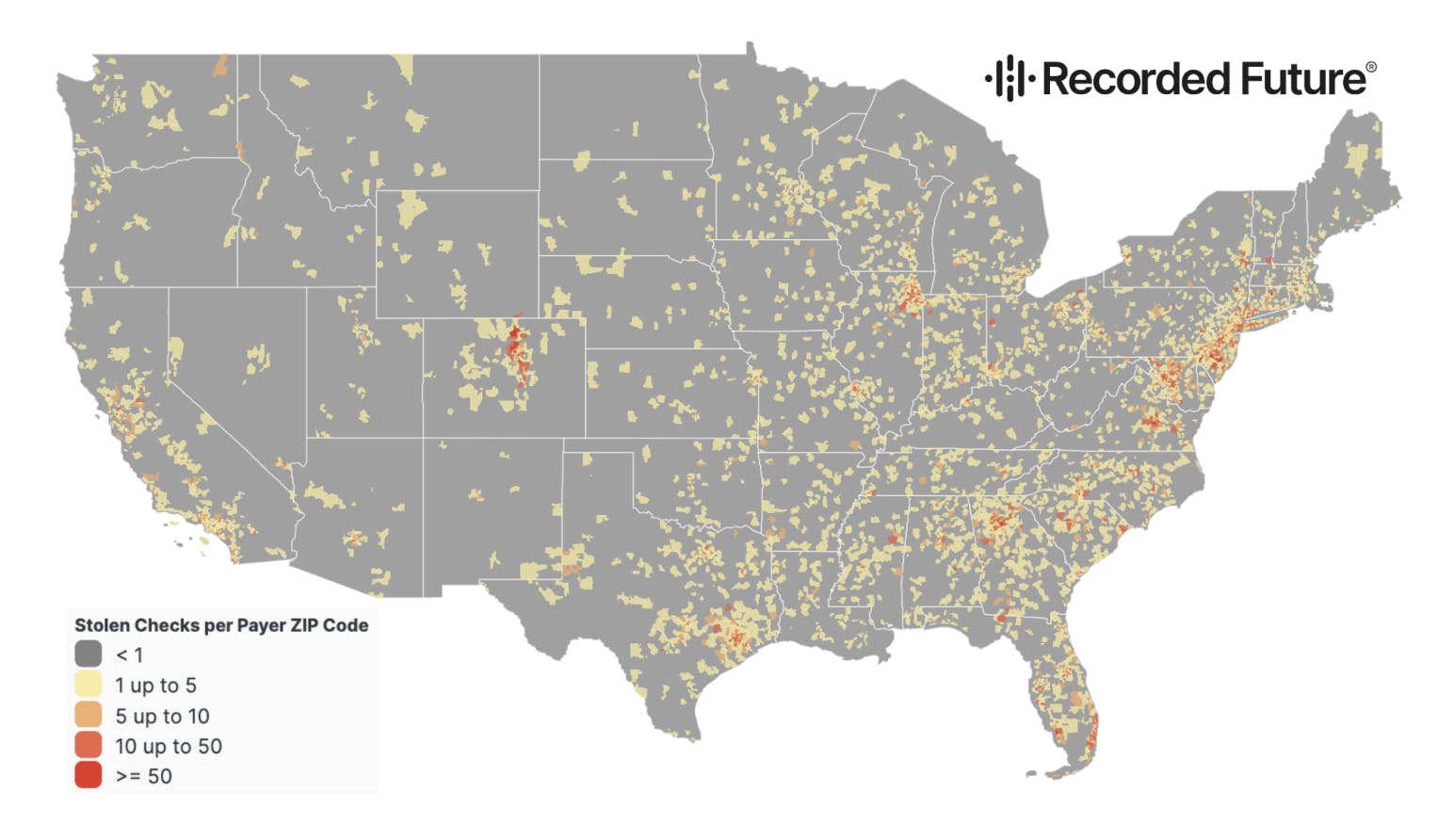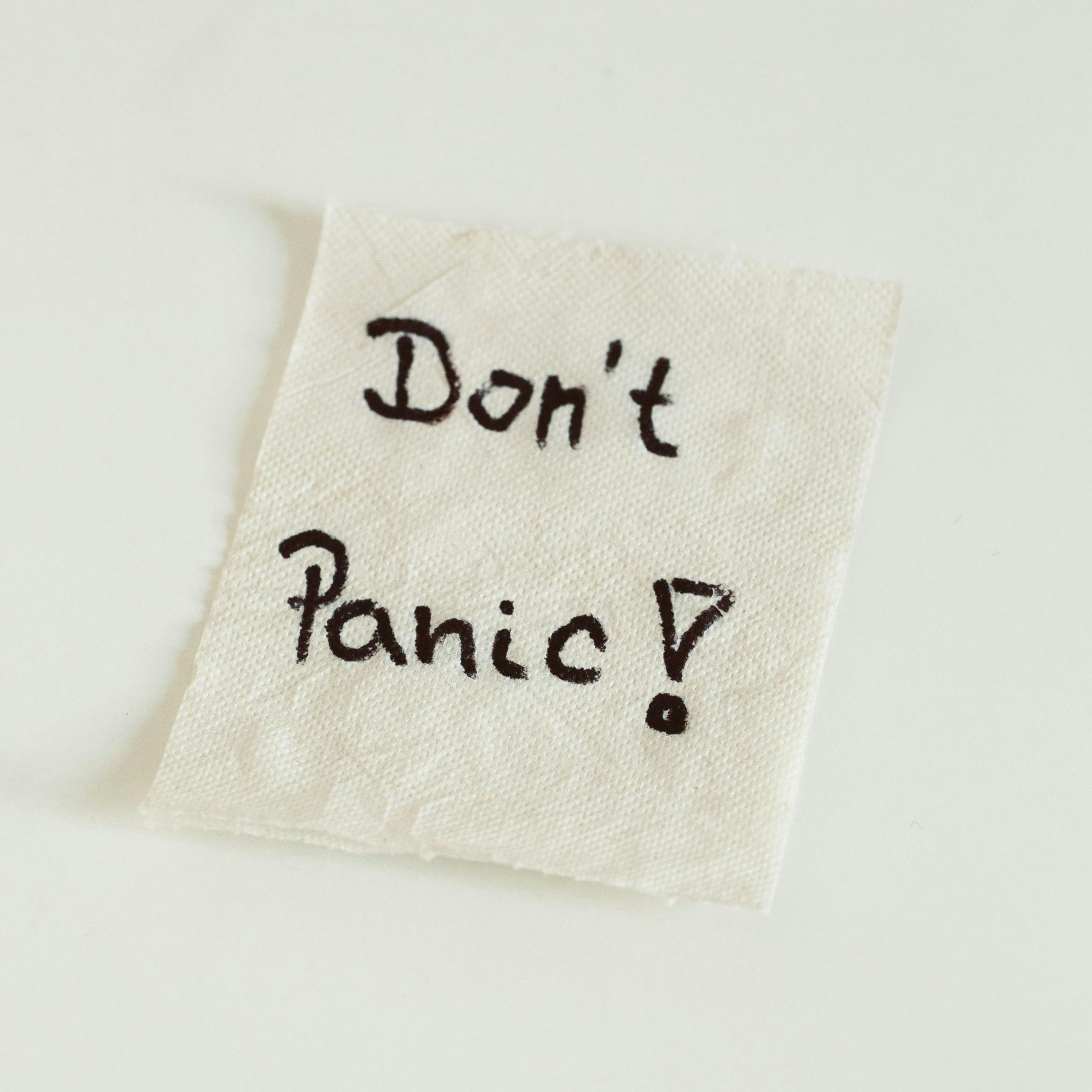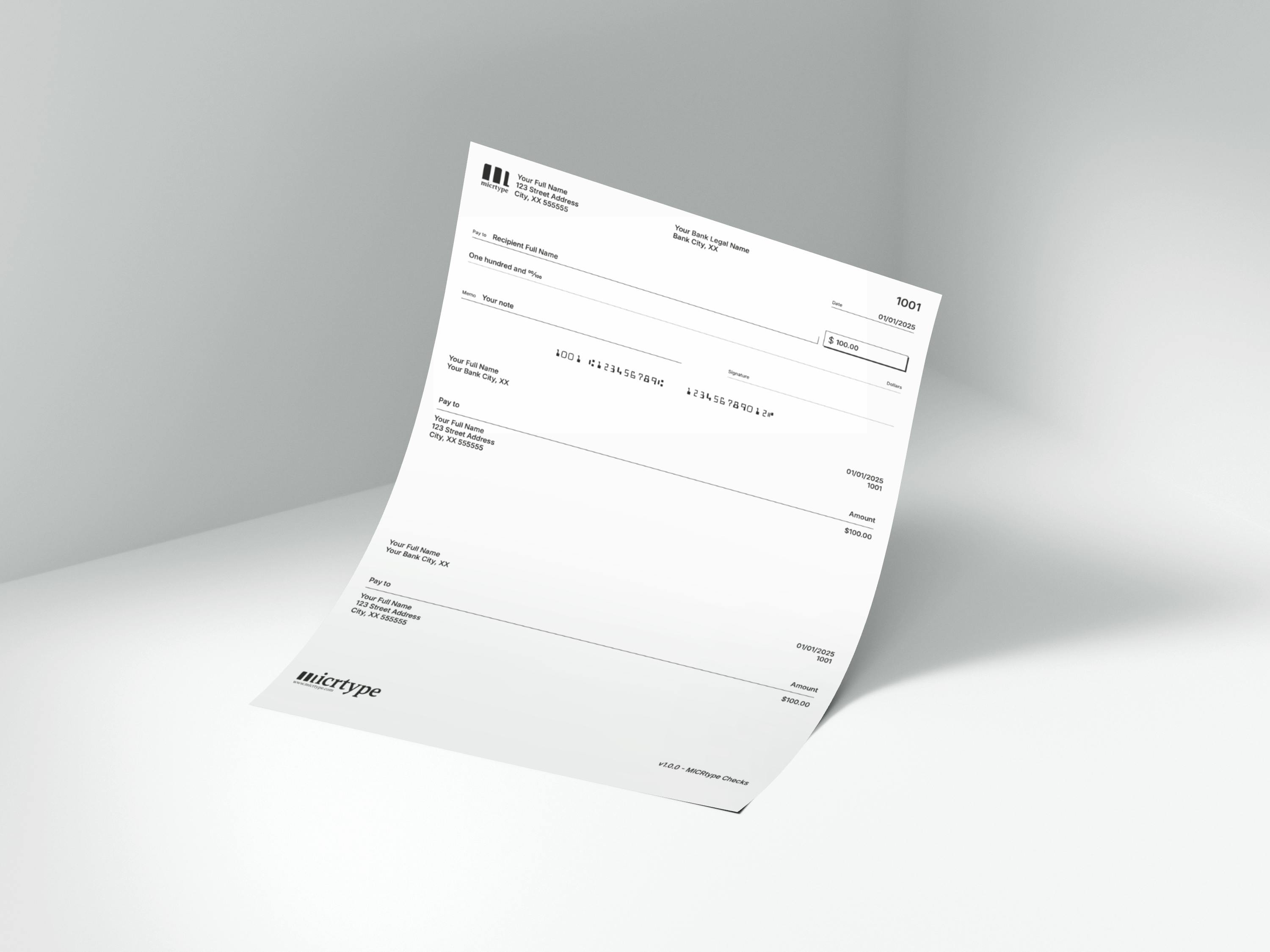Printing Checks at Home 101
3 things you should absolutely know before you start printing checks at home or in the office.
One of the most nerve-racking moments of my (admittedly short) stint in personal finance happened the day I decided to file my taxes by mail using my own home-grown MICR font (those funky numbers at the bottom of a check) and check template. There’s nothing quite like taking a leap of faith by sending a YOLO check to the IRS.
I wasn’t completely unprepared for this. I had spent about two years improving the MICR font and check template, making sure they adhered to all ANSI specs and still looked pretty. I tested them at banks, with random strangers (I’ll get back to that), and finally, with the US government.
Demostration of how to print our checks from your home or office
If you’re thinking about printing your own checks, here are three things you absolutely need to know:
1. Printing checks is easy. Maybe a little too easy...
There are dozens of websites out there for printing checks from home. I’ve tried a handful myself, and the checks even cashed! But even for someone desperately trying to pay rent on time, something felt off about most of these websites from the start. Here are a few red flags I noticed:
- Sometimes, they store your bank information in what appears to be plain text or with very little security in place.
- If not the actual bank information, the checks themselves are definitely being stored as unencrypted PDFs in some cases.
- They don’t use modern fintech solutions like Plaid or Stripe to connect with your bank account securely.
- The checks are poorly designed and don’t meet ANSI specs (though most banks will still cash them).
- You have to buy credits for checks over and over again, and $2 per check gets expensive fast.
- Their website looks like it was built in the 90s (and, honestly, it probably was).

Graphic by Recorded Future, H1 2024 Check Fraud Report: Geographic Trends and Threat Actor Patterns
I could go on, but the main point is this: Always check your source before giving up your financial data, including us! Any financial data stored anywhere is at risk. That’s why at MICRtype, we will likely never offer any sort of online service unless we are absolutely certain your information will remain safe or never touch our servers or databases.
Your data is safe with us. In fact, it’s safer with us than with any other vendor, and that’s a promise. You know why? Because we don’t store your bank information.
Ever.
Not even the card you use to pay ever hits our servers or database. That information is handled by PCI-compliant, trusted payment vendors (Snipcart and Stripe, in our case).
2. You can print checks on (almost) anything. But should you?
Here’s a fun fact: You can technically write a check on a napkin. As long as the bank honors the transaction, that napkin is a valid check.

Photo by Markus Spiske on Unsplash
Don’t believe me? Think about what a check really is. It’s just a piece of paper that says, “Hey, take money out of my account and put it in the account of my friend Steve.”
A check is simply a record of a desired transaction. It’s treated the same as if you went to a bank teller and told them to transfer some money to your friend Steve’s account in person.
If you hand a bank teller a napkin with your bank account number and the desired transaction, the bank will honor it, assuming you’re there to confirm the validity of the napkin.
Of course, you probably can’t send a napkin check by mail, but you certainly can send a check printed from a sketchy website.
That’s the main issue, and the reason check fraud is on the rise. You don’t have to be physically present when a check is cashed, as long as the check meets certain requirements agreed upon by financial institutions (such as ANSI specifications).
If security is as important to you as it is to me, it makes sense to print your checks on high-quality check stock paper with built-in fraud prevention.
Luckily, great check stock paper is available from lots of good vendors for very cheap!
But that’s not all that matters. The most important thing you can do to prevent check fraud is to use trusted, high-quality software.
3. Your MICR font quality and check template quality matter more than ever.
I’ll be the first to admit, our font is expensive compared to the free fonts floating around out there. But let me ask you this:
- Do you think the author of those free MICR fonts can point you to the exact ANSI spec they used to create the font?
- Can they give you the millimeter radius of the rounded corners on the 7, or the minimum and maximum tolerances for MICR ink printers?
- Are they as obsessed about getting the font right as we are?
Maybe. But I seriously doubt it.

The reason our fonts and checks may seem expensive is because we’ve spent three years now testing and putting our font and checks through rigorous quality control.
Now I have to admit something. Remember that check I sent to the IRS? Well, it actually bounced.
Don’t worry! The check was perfectly fine—I just didn’t have the funds in my account. Oops.Selling a check font and template is a pretty niche business, but it’s one that I’m passionate about, even if it doesn’t exactly pay the bills.
So, what are you waiting for? I’ve got more DIY finance products to make, and this coffee doesn’t pay for itself. Go ahead and click that buy button.
As a small business, we deeply appreciate every order!
